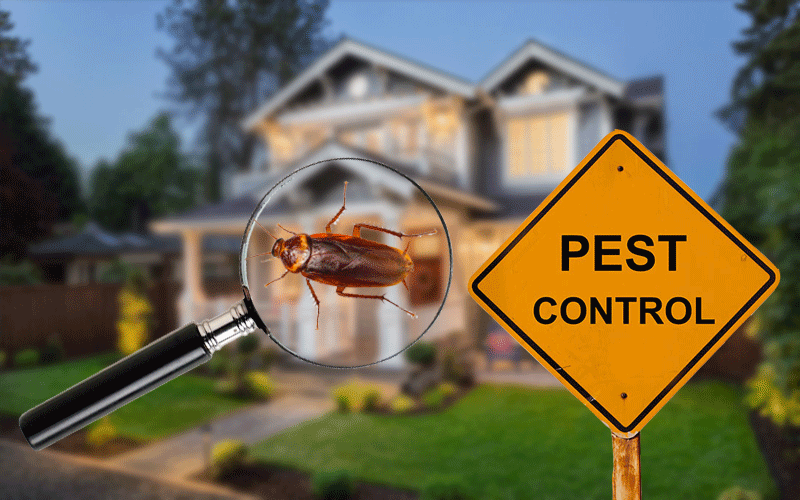Bed Pest Treatment Malfunction: Comparing Chemical Vs. Non-Chemical Solutions
In the world of parasite control, particularly when dealing with the consistent issue of bed insects, the choice between chemical and non-chemical therapy services can be a pivotal one. Both techniques offer distinctive advantages and disadvantages, affecting factors such as performance, security factors to consider, and total cost. By taking a look at the nuanced details of each method, a clearer understanding of which path to seek in dealing with a bed bug invasion can be acquired.
Effectiveness of Chemical Therapies
Chemical therapies for bed insect infestations have been commonly acknowledged for their rapid and potent efficacy in eliminating these pests. When thinking about the efficiency of chemical therapies, it is essential to comprehend that they can give a fast and detailed remedy to a bed pest trouble. Expert pest control experts usually depend on pesticides to target bed pests at numerous stages of their life process, consisting of eggs, nymphs, and adults. These chemicals generally function by interfering with the bed bugs' nerves, causing paralysis and eventual fatality.
Additionally, chemical therapies have the advantage of offering recurring effects, meaning that they can remain to eliminate bed insects even after the initial application. This recurring action is especially helpful in combating any possible re-infestations. Additionally, the rapid action of chemical treatments can bring alleviation to people encountering severe bed insect invasions, allowing them to gain back control of their living spaces rapidly.
Safety And Security Worries With Chemical Solutions
One vital element that requires mindful factor to consider when using chemical services for bed pest therapy is making certain the safety and security of passengers and the atmosphere. Exposure to particular chemicals made use of in bed pest therapies can lead to respiratory system concerns, skin irritation, or other unfavorable reactions, particularly in people with pre-existing conditions or sensitivities.
Furthermore, the ecological influence of chemical services is an additional significant factor to consider. Some chemicals utilized in bed pest treatments may be harmful to valuable bugs, wildlife, and environments if they leach into the dirt or water supply. It is vital to utilize chemical therapies deliberately, following safety guidelines, and thinking about much less harmful options to minimize these threats and make certain the safe and reliable management of bed bug invasions.
Advantages of Non-Chemical Techniques
Considering the potential safety and security concerns and ecological impact connected with chemical services for bed pest therapy, checking out non-chemical techniques offers an appealing option with numerous unique benefits. Non-chemical therapies are eco friendly, as they do not add to air or water contamination, making them a lasting option for parasite control.
In addition, non-chemical solutions can be efficient in targeting bed pests, including hard-to-reach areas where chemical therapies might not penetrate - A1 pest control charlotte nc bed bugs. Methods such as warmth treatment, vacuuming, heavy steam cleaning, and cushion encasements supply extensive eradication without the use of dangerous chemicals.
Limitations of Non-Chemical Treatments

Additionally, non-chemical treatments usually require several applications to attain successful removal. This can be time-consuming check out this site and may not constantly guarantee total elimination of all bed pests and their eggs, specifically in hidden or hard-to-reach places.
Furthermore, the success of non-chemical treatments greatly relies upon proper execution and thoroughness, which can be challenging for individuals without expert experience. Inadequate application of non-chemical methods may lead to incomplete elimination, leading to consistent problems and the requirement for additional therapies.
Therefore, while non-chemical therapies have their advantages, it is vital to acknowledge these limitations and consider them when determining one of the most effective technique for managing bed insect problems.
Expense Comparison: Chemical Vs. Non-Chemical Options
Given the restrictions linked with non-chemical treatments, a vital element to assess in the context of bed bug management is the price comparison between chemical and non-chemical options. Chemical therapies typically involve the application of pesticides by specialists, which can vary from $250 to $900 per area, relying on the intensity of the invasion and the size of the area to be dealt with. In comparison, non-chemical therapies like warm treatment or steam can be extra pricey, with prices varying from $1,000 to $6,000 for a whole home. While the first price of chemical therapies may seem lower, several therapies might be called for to completely eradicate the problem, potentially raising the general price. On the various other hand, non-chemical options might provide a more environment-friendly and sustainable solution, although they can be cost-prohibitive for some individuals. Ultimately, when thinking about the price of bed bug therapy alternatives, it is essential to evaluate the ahead of time expenses against the performance and long-term sustainability of the picked method.
Final Thought

Taking into consideration the potential safety and security worries and environmental influence connected with chemical services for bed insect treatment, checking out non-chemical strategies offers a promising choice with several distinct advantages.Given the constraints connected with non-chemical therapies, a vital facet to evaluate in the context of bed bug management is the expense comparison in between chemical and non-chemical alternatives. In contrast, non-chemical therapies like heat treatment or steam can be a lot more costly, with costs varying from $1,000 to $6,000 for an entire home. While the first cost of chemical therapies may appear lower, numerous treatments might be called for to completely get rid of the infestation, potentially increasing the total cost.In conclusion, when comparing chemical and non-chemical bed bug treatment alternatives, it is necessary to think about performance, safety, benefits, constraints, and price.